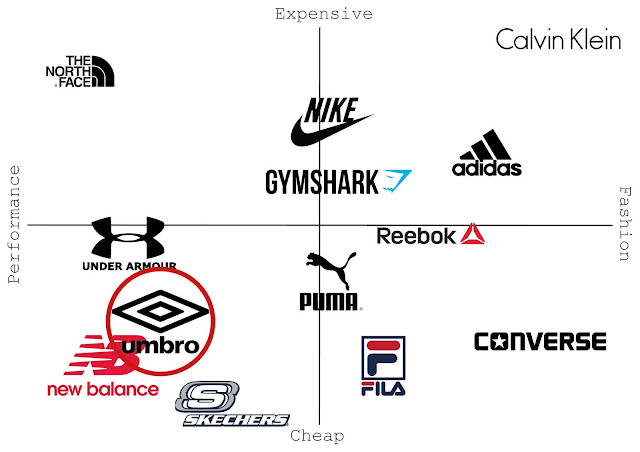PESTLE Analysis
A PESTLE analysis is a framework to analyse the key factors (Political, Economical, Sociological, Technical, Legal and Environmental) influencing an organisation from the outside.
Politcal/Legal -
Economical -
Social -
Technological -
Environmental -
Politcal/Legal -
As Umbro is well known in over 90 countries, all of these have different laws, and therefore all operate differently. This causes Umbro to work in different ways depending on the country, this can affect the success of them due to the location. Countries like China and North Korea have very political systems where they don’t allow western products into the country. This being said Umbro will either have to adapt their products or get rid of these. Umbro’s global rank of 358,379, compared to Nikes 458, this shows that even though Umbro is known globally its still not successful.
During Nikes ownership, Umbro’s revenues went from £210 million in 2006 to £170 in 2011, these are currently lower than ever but within the next year they were due to rise from £145 to £167 million. This shows that Umbro has been unable to recover itself since Nike.
Globally there can be issues with what is classed as a desirable product, this is due to Religion, economic issues, geographic which influence the need of a product. In Middle Eastern contras its not socially acceptable for women to participate in sports actives so therefore it’s sensible not to sell their products here.
Technological -
Umbro has the least amount of followers on all social media platforms compared to its competitors, they only have 317k followers on Instagram compared to Nike having 83.8 million, and Adidas having 23.1 million. Umbro also receives the least amount of likes or activity with getting an average of 2379 compared to Nike’s 952k, this suggests that Nike has a better global popularity.
Environmental -
Umbro’s contractor protects both human health and the environments by meeting requirements including water discharge, solid/hazardous waste and air emissions. They adopt reasonable measures to lower negative impacts on the environment and always continue to improve environmental performance.










Comments
Post a Comment